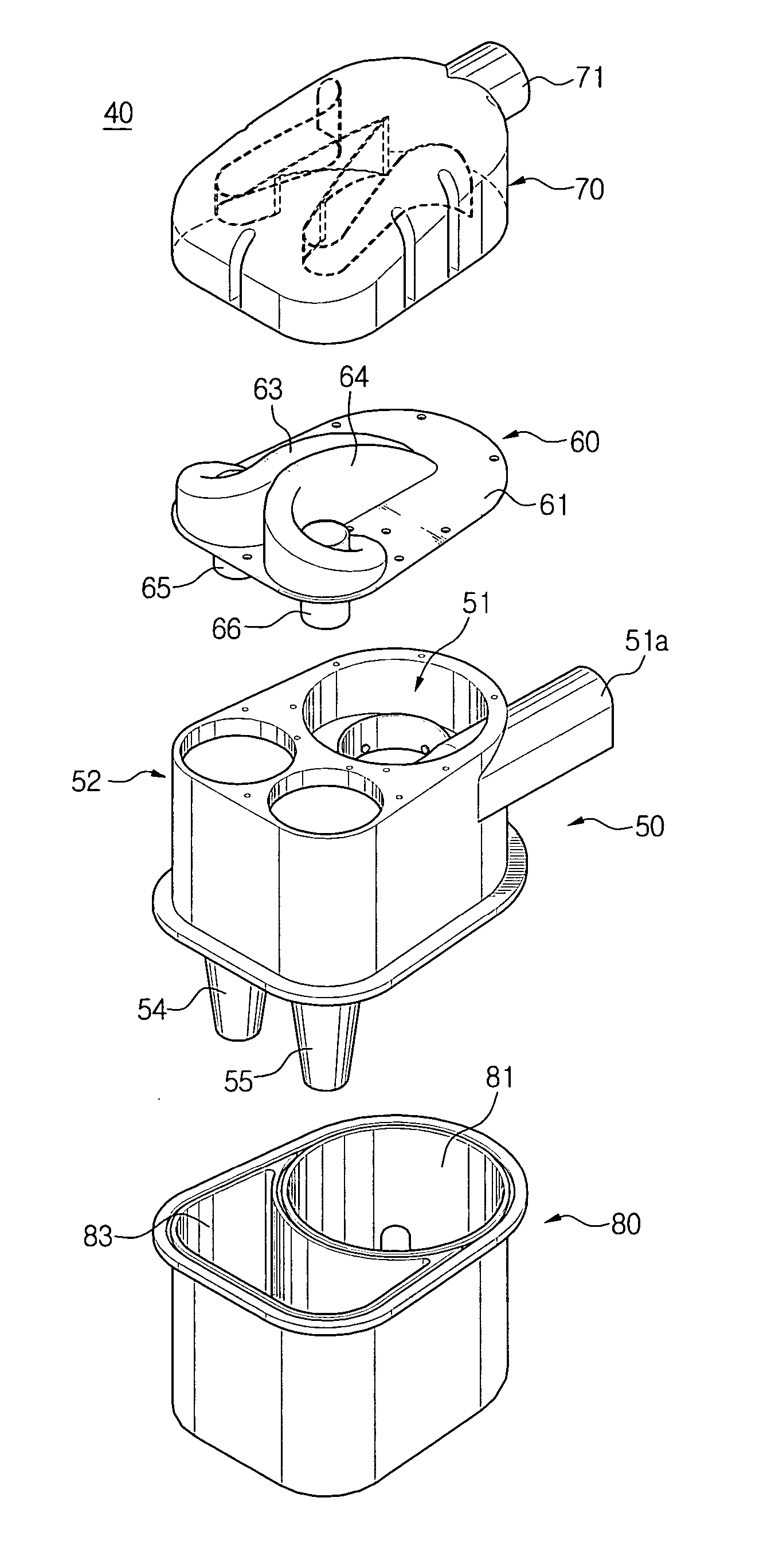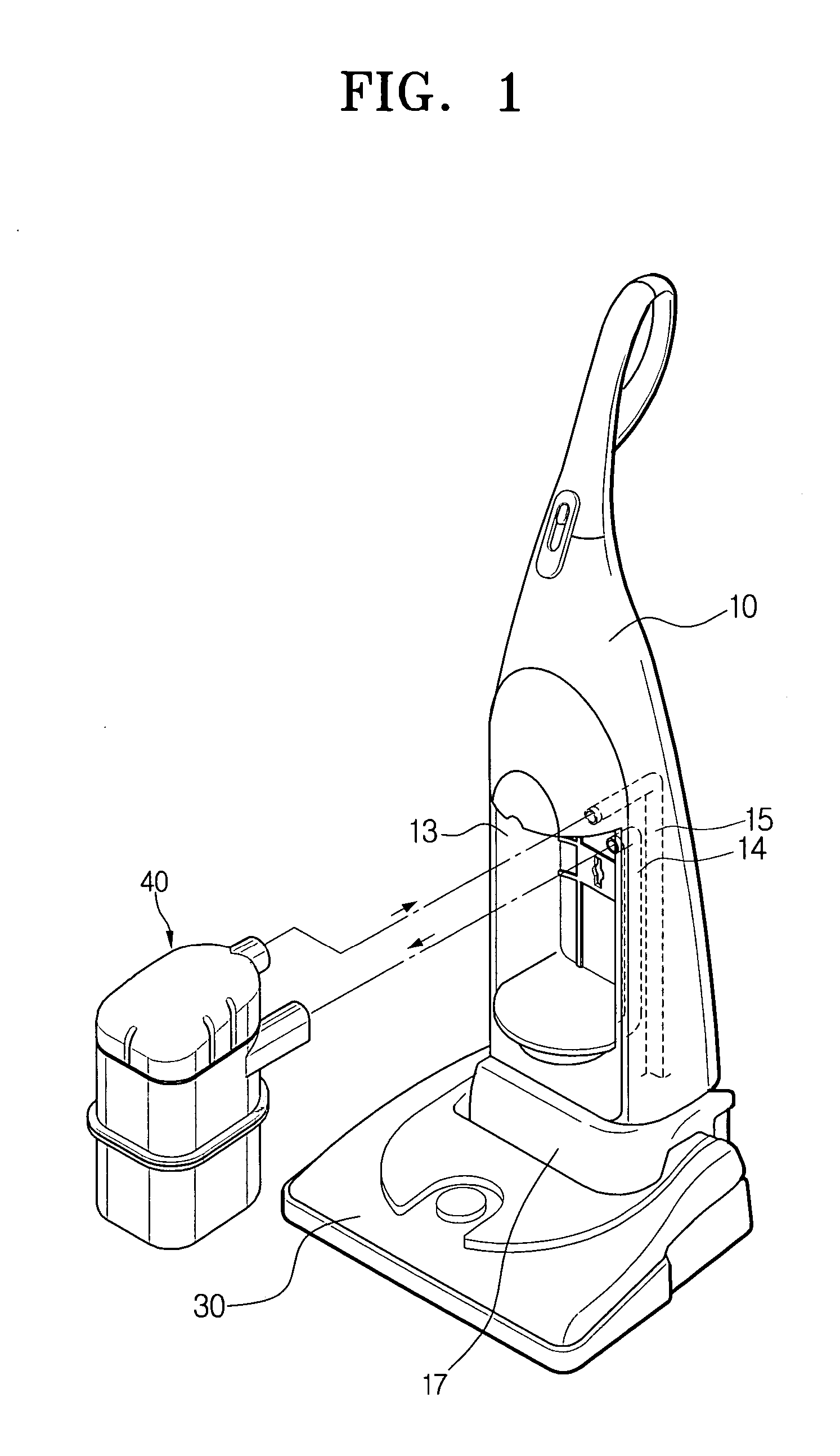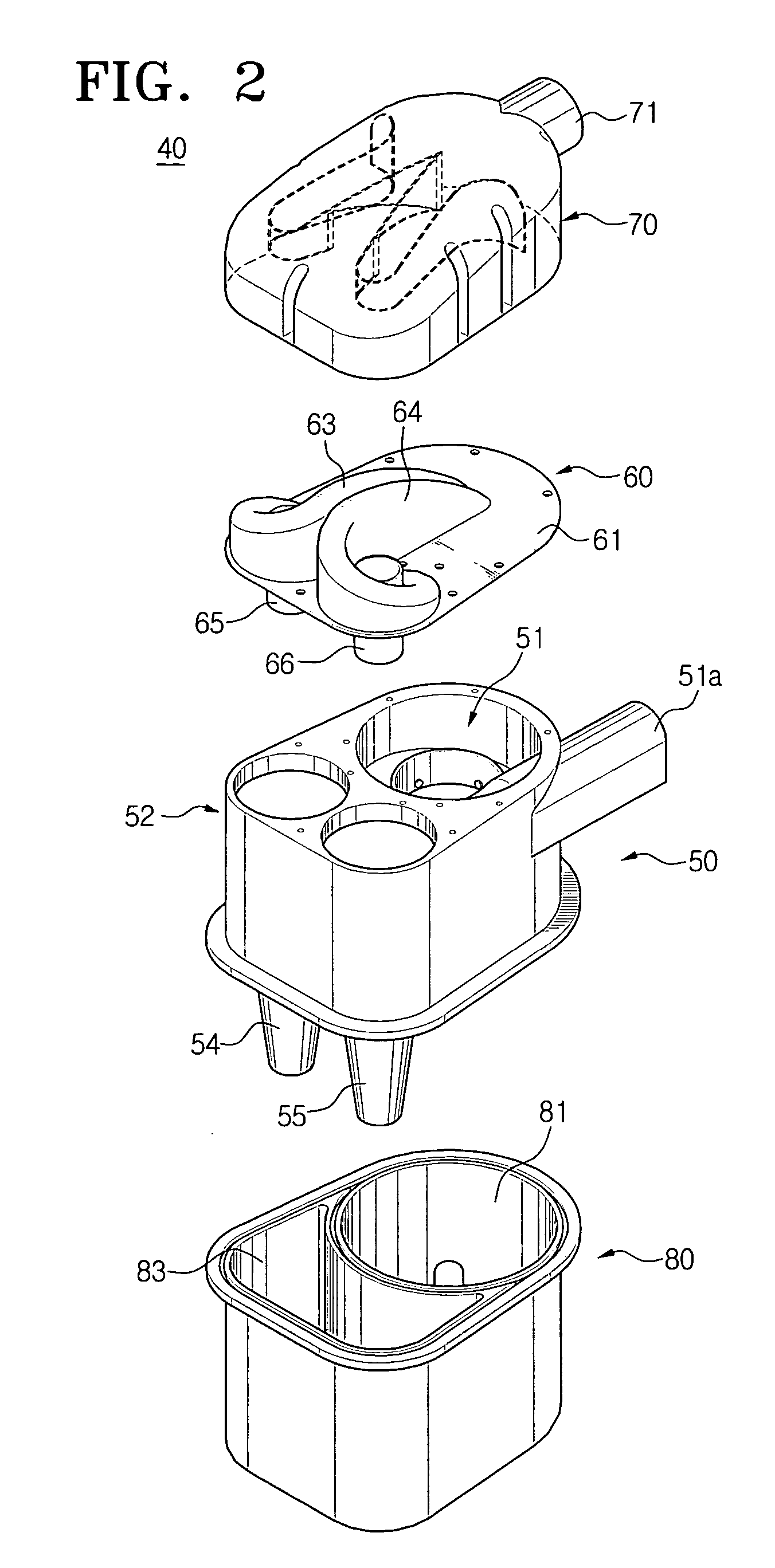Cyclone dust collecting apparatus and vacuum cleaner using the same
- Summary
- Abstract
- Description
- Claims
- Application Information
AI Technical Summary
Benefits of technology
Problems solved by technology
Method used
Image
Examples
Embodiment Construction
[0025] Certain embodiments of the present invention will be described in greater detail with reference to the accompanying drawings.
[0026] In the following description of the drawing figures, identical drawing reference numerals are used for indicating the same or similar elements between different drawing figures. The elements and functions defined in the description, such as the construction and structural elements, are to be considered illustrative only, and are provided to assist in a comprehensive understanding of the invention. Thus, it is apparent that the present invention can be carried out without use of some or all of the defined elements. Also, well-known functions or constructions are not described in detail to avoid obscuring the invention in unnecessary detail.
[0027] Referring to FIG. 1, a vacuum cleaner according to an embodiment of the present invention comprises a main body 10, a suction brush 30 and a cyclone dust collecting apparatus 40. A driving source such a...
PUM
| Property | Measurement | Unit |
|---|---|---|
| Diameter | aaaaa | aaaaa |
| Size | aaaaa | aaaaa |
| Shape | aaaaa | aaaaa |
Abstract
Description
Claims
Application Information
 Login to View More
Login to View More - R&D
- Intellectual Property
- Life Sciences
- Materials
- Tech Scout
- Unparalleled Data Quality
- Higher Quality Content
- 60% Fewer Hallucinations
Browse by: Latest US Patents, China's latest patents, Technical Efficacy Thesaurus, Application Domain, Technology Topic, Popular Technical Reports.
© 2025 PatSnap. All rights reserved.Legal|Privacy policy|Modern Slavery Act Transparency Statement|Sitemap|About US| Contact US: help@patsnap.com



